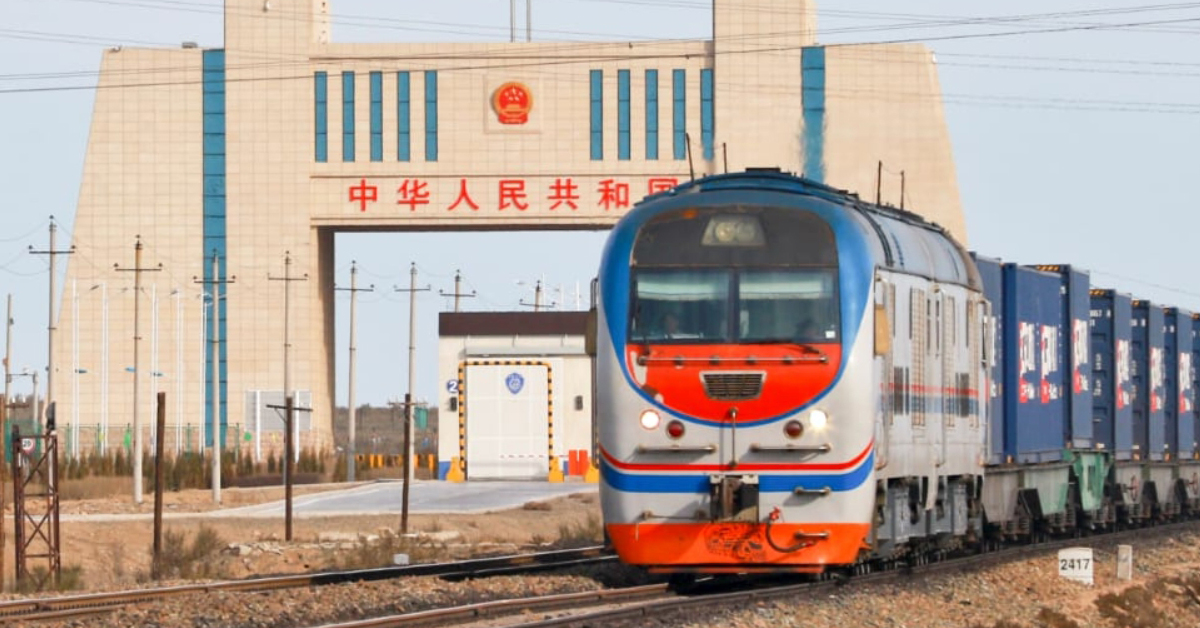This was published by the China Global South Project on 14 January 2022. China Foresight is affiliated with the China Global South Project and regularly provides opinion pieces for the weekly IDEAS China Global South newsletter. Click here to subscribe to the newsletter.
Over the two weeks, we closely followed Kazakh people take to the streets to protest against increasing fuel prices after a government decision to lift a price cap. As the protests spread to the capital Almaty, we began to wonder what they might mean for China’s growing economic and diplomatic footprint in the country.
It’s interesting to trace the journey of China’s shifting public reaction to the protests. On 7th January, Wang Wenbin stated China’s support for Kazakh authorities’ ‘forceful measures to crack down on violent terrorist acts.’ Xi Jinping then sent a message to President Tokayev opposing ‘any deliberate attempt by external parties [to] instigate a “colour revolution”’. A phone call between Wang Yi and Kazakh Foreign Minister Mukhtar Tileuberdi spoke in the terms of Beijing’s ‘three evils’ of terrorism, separatism, and extremism. China’s initially fairly muted response evolved into more active support, gradually buying into the narrative that rioters/terrorists were trained, funded, or encouraged by foreign forces.
The protests have concerned China for several reasons. Firstly, fears that spiralling domestic instability might spill over into China, with protestors refocusing their frustration towards Beijing’s repressive policies in neighbouring Xinjiang, where 1.2 million ethnic Kazakhs live. Second, the repercussions of prolonged unrest on China’s natural resource trade with Kazakhstan – China sources 20% of its natural gas via the Central-Asia-China Gas Pipeline which runs through southern Kazakhstan, and half of China’s foreign investment in Kazakhstan is in the oil and gas industry.
Some commentators have argued that China is also unsettled by the protests from a geopolitical perspective. The dispatch of 2,500 troops by the Russian-led Collective Security Treaty Organisation (CSTO) to Kazakhstan underscores Russia’s role in Central Asia’s security architecture. This move may give Russia greater control over China-Central Asia oil and gas prices, potentially compromising China’s land-based energy supply chain and overall energy security.
However, this may overstate the fractures in the China-Russia relationship. As LSE IDEAS’ former director Michael Cox has argued, there is more to unite China and Russia in the current international environment than there is that divides them. The similar domestic political structures give the leading factions in both countries a common interest in bolstering Tokayev’s rule and challenging anti-authoritarian forces. And China has little interest in imitating the institutional legacy of Russia’s security footprint in Central Asia.
In the end, Kazakhstan reflects what we have been pointing out over the last months in Afghanistan, Guinea, Sudan, and Ethiopia: an increased exposition to insecurity abroad and gradually evolving Chinese tactics to deal with these instances. China’s rhetorical adherence to non-interference constrains China in a normative sense from acting abruptly. In line with projecting its image of a different external actor compared to the interventionist West, Beijing generally adopts a pragmatic approach to political crises and instability abroad.
Despite this, China’s diplomatic behaviour over the last year also reveals the considerable breadth of possible responses when Chinese interests are at stake. In response to the Taliban take-over in Afghanistan, for instance, Beijing sought a high-level dialogue early during the Taliban insurgency and attempted to maintain direct diplomatic links with the group throughout their violent take-over. China’s proactive involvement in Afghanistan evidently contrasts to its relatively muted response to the Sudanese and – most recently – Kazakh protests.
While conclusions at the moment are necessarily premature, in the medium to long term, Beijing may well need to think of more creative strategies than just band-wagoning to protect its interests in Kazakhstan. After all, as one of the cradles of the BRI, Kazakhstan carries immense symbolic value for Xi Jinping’s signature foreign policy strategy. To paraphrase the words of a senior China scholar, if the BRI doesn’t work in Central Asia, it doesn’t work anywhere else.
In practical terms, Beijing could step up bilateral capacity building of Kazakh security services and law enforcement – a proposal Wang Yi already hinted at in the phone call with his Kazakh counterpart. Chinese firms could also step up the deployment of Chinese private security companies to patrol BRI projects and Chinese investments in the country and region more broadly, although local laws may limit their ability to protect personnel.
China is certainly aware of the need to become more engaged in regional security issues. In late 2021, reports surfaced about China reportedly committing to building a Tajik military outpost. China’s People’s Armed Police, a paramilitary organization that liaises with other security forces in the region on issues such as counterterrorism, already operates a different Tajik outpost near the Afghan border.
While it is highly likely that China will become directly military involved in Kazakhstan, actions such as the recent deployment of police advisors and anti-riot equipment to the Solomon Islands to help put down social unrest reportedly linked to the country’s recognition of the “One China principle”, reflects Beijing’s growing appetite to support local governments in the security domain in enforcing policies conducive to Chinese interests.
With important political events such as the Olympics and the 20th Party Congress ahead, however, Beijing is probably more than content to outsource the heavy lifting in Kazakhstan to Russia while maintaining a safe distance and avoiding Chinese casualties that may raise domestic discontent. As the CSTO troops begin to withdraw from Kazakhstan, it remains to be seen how effective Beijing’s approach will be in the future
This article gives the views of the author, and not the position of the China Foresight Forum, LSE IDEAS, nor The London School of Economics and Political Science.
The blog image, “2022 Kazakhstan protests — Aqtobe, January 4“, is licensed under CC BY-SA 4.0.





